Description
Operations Management, Canadian Edition (Heizer et al.)
Chapter 2 Operations Strategy in a Global Environment
1) NAFTA seeks to phase out all trade and tariff barriers among Canada, Mexico, and the United States.
Answer: TRUE
Diff: 2
Skill: knowledge
Objective: A Global View of Operations
2) The World Trade Organization has helped to significantly reduce tariffs around the world.
Answer: TRUE
Diff: 2
Skill: comprehension
Objective: A Global View of Operations
3) Production processes are being dispersed to take advantage of national differences in labour costs.
Answer: TRUE
Diff: 2
Skill: comprehension
Objective: A Global View of Operations
4) NAFTA seeks to phase out all trade and tariff barriers between the United States and Asia.
Answer: FALSE
Diff: 2
Skill: comprehension
Objective: A Global View of Operations
5) One reason for global operations is to gain improvements in the supply chain.
Answer: TRUE
Diff: 2
Skill: comprehension
Objective: A Global View of Operations
6) One reason to globalize is to learn to improve operations.
Answer: TRUE
Diff: 1
Skill: knowledge
Objective: A Global View of Operations
7) To attract and retain global talent, and to expand a product’s life cycle, are both reasons to globalize.
Answer: TRUE
Diff: 2
Skill: knowledge
Objective: A Global View of Operations
8) A product will always be in the same stage of its product life cycle regardless of the country.
Answer: FALSE
Diff: 2
Skill: comprehension
Objective: A Global View of Operations
9) The World Trade Organization helps provide governments and industries around the world with protection from firms that engage in unethical conduct.
Answer: TRUE
Diff: 2
Skill: knowledge
Objective: A Global View of Operations
10) Boeing’s development of the 787 Dreamliner is an example of a company obtaining a competitive advantage through product differentiation/innovation.
Answer: TRUE
Diff: 3
Skill: application
Objective: LO2 Identify and explain three strategic approaches to competitive advantage
11) An organization’s strategy is the purpose or rationale for its existence.
Answer: FALSE
Diff: 1
Skill: knowledge
Objective: LO1 Define mission and strategy
12) Operations strategies are implemented in the same way in all types of organizations.
Answer: FALSE
Diff: 2
Skill: knowledge
Objective: LO1 Define mission and strategy
13) An organization’s ability to generate unique advantages over competitors is central to a successful strategy implementation.
Answer: TRUE
Diff: 2
Skill: knowledge
Objective: LO2 Identify and explain three strategic approaches to competitive advantage
14) Low-cost leadership is the ability to distinguish the offerings of the organization in any way that the customer perceives as adding value.
Answer: FALSE
Diff: 3
Skill: knowledge
Objective: LO3 Identify and define the 10 decisions of operations management
15) Most services are tangible; this factor determines how the ten decisions of operations management are handled differently for goods than for services.
Answer: FALSE
Diff: 3
Skill: comprehension
Objective: LO3 Identify and define the 10 decisions of operations management
16) The relative importance of each of the ten operations decisions depends on the ratio of goods and services in an organization.
Answer: TRUE
Diff: 2
Skill: comprehension
Objective: LO3 Identify and define the 10 decisions of operations management
17) Decisions that involve what is to be made and what is to be purchased fall under the heading of supply-chain management.
Answer: TRUE
Diff: 2
Skill: knowledge
Objective: LO3 Identify and define the 10 decisions of operations management
18) Manufacturing organizations have ten strategic OM decisions, while service organizations have only eight.
Answer: FALSE
Diff: 1
Skill: knowledge
Objective: LO3 Identify and define the 10 decisions of operations management
19) Errors made within the location decision area may overwhelm efficiencies in other areas.
Answer: TRUE
Diff: 2
Skill: comprehension
Objective: LO3 Identify and define the 10 decisions of operations management
20) Porter Airlines’ core competency is operations.
Answer: TRUE
Diff: 2
Skill: application
Objective: LO4 Understand the significance of key success factors and core competencies
21) Key success factor and core competency are synonyms.
Answer: FALSE
Diff: 2
Skill: knowledge
Objective: LO4 Understand the significance of key success factors and core competencies
22) SWOT analysis is a method of determining external strengths and weaknesses and internal opportunities and threats.
Answer: FALSE
Diff: 2
Skill: knowledge
Objective: Strategy development and implementation
23) For the greatest chance of success, an organization’s operations management strategy must support the company’s strategy.
Answer: TRUE
Diff: 2
Skill: comprehension
Objective: LO4 Understand the significance of key success factors and core competencies
24) Key Success Factors are those activities that are necessary to achieving competitive advantage.
Answer: TRUE
Diff: 2
Skill: knowledge
Objective: LO4 Understand the significance of key success factors and core competencies
25) A multinational corporation has extensive international business involvements.
Answer: TRUE
Diff: 1
Skill: comprehension
Objective: LO5 Identify and explain four global operations strategy options
26) The multidomestic OM strategy maximizes local responsiveness while achieving a significant cost advantage.
Answer: FALSE
Diff: 3
Skill: comprehension
Objective: LO5 Identify and explain four global operations strategy options
27) Which of the following statements regarding the Dreamliner 787 is true?
A) Boeing has found no international partners.
B) The new aircraft incorporates a limited number of aerospace technologies.
C) The new aircraft uses engines from only one manufacturer.
D) Boeing will add 99% of the aircraft’s value.
E) Boeing has found partners in over a dozen countries.
Answer: E
Diff: 2
Skill: comprehension
Objective: Global company profile
28) Boeing’s new 787 Dreamliner
A) is assembled in Washington, D.C.
B) uses engines from Japan.
C) has its fuselage sections built in Australia.
D) has increased efficiency from new engine technology.
E) results from a partnership of about a dozen companies.
Answer: D
Diff: 2
Skill: comprehension
Objective: Global company profile
29) Which of the following is an example of a response to the global environment?
A) Boeing’s local sales and production
B) Benneton’s strict limits on design, production, and distribution
C) a Chinese manufacturer, Haier, producing in China
D) Ford’s partnerships with GM
E) Ford’s partnerships with Volvo and Mazda
Answer: E
Diff: 2
Skill: application
Objective: LO5 Identify and explain four global operations strategy options
30) Which of the following is an example of globalization of operations strategy?
A) Boeing’s Dreamliner has engines with higher fuel/payload efficiency.
B) Ford’s new auto models have dent-resistant panels.
C) A Chinese manufacturer, Haier, now operates plants in the United States.
D) Hard Rock Café provides an “experience differentiation” at its restaurants.
E) Porter Airlines focuses on short-haul flights.
Answer: C
Diff: 2
Skill: application
Objective: LO5 Identify and explain four global operations strategy options
31) Cost cutting in international operations can take place because of
A) higher taxes and tariffs.
B) higher wage scales.
C) higher indirect costs.
D) more stringent regulations.
E) lower wages, lower indirect costs, and lower taxes and tariffs.
Answer: E
Diff: 1
Skill: knowledge
Objective: LO5 Identify and explain four global operations strategy options
32) Which of the following is a reason for globalizing operations?
A) reduce costs with a reduction in effectiveness of the supply chain
B) improve the supply chain while increasing overall costs
C) understand markets
D) reduce stockholder approval ratings
E) increase costs at the risk of stockholder approval ratings
Answer: C
Diff: 2
Skill: knowledge
Objective: LO5 Identify and explain four global operations strategy options
33) Multinational organizations can shop from country to country and cut costs through
A) higher taxes and tariffs.
B) higher wage scales.
C) higher indirect costs.
D) more stringent regulations.
E) lower wages, lower indirect costs, and lower taxes and tariffs.
Answer: E
Diff: 2
Skill: comprehension
Objective: LO5 Identify and explain four global operations strategy options
34) The term maquiladora is synonymous with
A) free trade zones in Mexico.
B) Chinese forced labour camps.
C) home-based or cottage industry.
D) areas that do not meet U.S. standards for workplace safety and pollution.
E) taxes charged by the Mexican government.
Answer: A
Diff: 2
Skill: knowledge
Objective: A Global View of Operations
35) Which of the following is true of maquiladoras?
A) They discourage foreign businesses from outsourcing.
B) They assess tariffs only on the value-added work done.
C) They originated in China.
D) They are not available to Canadian companies.
E) They can be found in many countries.
Answer: B
Diff: 2
Skill: comprehension
Objective: A Global View of Operations
36) Which of the following is not a reason for globalizing operations?
A) to gain improvements in the supply chain
B) to improve operations
C) to expand a product’s life cycle
D) to attract and retain global talent
E) to increase profits at the expense of quality
Answer: E
Diff: 2
Skill: comprehension
Objective: LO5 Identify and explain four global operations strategy options
37) Which of the following does not represent a reason for globalizing operations?
A) to reduce costs
B) to improve the supply chain
C) to reduce responsiveness
D) to attract and retain global talent
E) All of the above are valid reasons for globalizing operations.
Answer: C
Diff: 2
Skill: comprehension
Objective: LO5 Identify and explain four global operations strategy options
38) NAFTA seeks to
A) substitute cheap labour in Mexico for expensive labour in the United States.
B) curb illegal immigration from Mexico to the United States.
C) phase out all trade and tariff barriers between North America and South America.
D) phase out all trade and tariff barriers between the United States, Canada, and Mexico.
E) phase out trade between the United States, Canada, and Mexico.
Answer: D
Diff: 2
Skill: comprehension
Objective: A Global View of Operations
39) With reference to cultural and ethical issues, the World Trade Organization has
A) succeeded in providing equal protection of intellectual property among nations.
B) made progress in providing equal protection of intellectual property among nations.
C) phased out all trade and tariff barriers between the United States and Mexico.
D) eliminated slave labour and child labour.
E) played little role in addressing cultural and ethical issues among nations.
Answer: B
Diff: 3
Skill: comprehension
Objective: A Global View of Operations
40) Which of the following is true about business strategies?
A) An organization should stick with its strategy for the life of the business.
B) All firms within an industry will adopt the same strategy.
C) Well defined missions make strategy development much easier.
D) Strategies are formulated independently of SWOT analysis.
E) Organizational strategies depend on operations strategies.
Answer: C
Diff: 3
Skill: comprehension
Objective: LO1 Define mission and strategy
41) Which of the following activities takes place most immediately once the mission has been developed?
A) The firm develops alternative or back-up missions in case the original mission fails.
B) The functional areas develop their functional area strategies.
C) The functional areas develop their supporting missions.
D) The ten OM decision areas are prioritized.
E) Operational tactics are developed.
Answer: C
Diff: 3
Skill: comprehension
Objective: LO1 Define mission and strategy
42) Which of the following statements about organizational missions is false?
A) They reflect a company’s purpose.
B) They indicate what a company intends to contribute to society.
C) They are formulated after strategies are known.
D) They define a company’s reason for existence.
E) They provide guidance for functional area missions.
Answer: C
Diff: 3
Skill: comprehension
Objective: LO1 Define mission and strategy
43) What term describes how an organization expects to achieve its missions and goals?
A) conditional expectation
B) tactic
C) SWOT
D) strategy
E) competitive advantage
Answer: D
Diff: 1
Skill: knowledge
Objective: LO1 Define mission and strategy
44) The fundamental purpose of an organization’s mission statement is to
A) create a good human relations climate in the organization.
B) define the organization’s purpose in society.
C) define the operational structure of the organization.
D) generate good public relations for the organization.
E) define the functional areas required by the organization.
Answer: B
Diff: 1
Skill: knowledge
Objective: LO1 Define mission and strategy
45) Which of the following is true?
A) Corporate mission is shaped by functional strategies.
B) Corporate strategy is shaped by functional strategies.
C) Functional strategies are shaped by corporate strategy.
D) External conditions are shaped by corporate mission.
E) Functional area missions are merged to become the organizational mission.
Answer: C
Diff: 3
Skill: comprehension
Objective: LO1 Define mission and strategy
46) Which of the international operations strategies involves a focus on high cost reductions and low local responsiveness?
A) international strategy
B) global strategy
C) transnational strategy
D) multidomestic strategy
E) transdomestic strategy
Answer: B
Diff: 2
Skill: comprehension
Objective: LO5 Identify and explain four global operations strategy options
47) Which of the following is least likely to be a cost leadership competitive advantage?
A) low overhead
B) effective capacity use
C) inventory management
D) broad product line
E) mass production
Answer: D
Diff: 2
Skill: comprehension
Objective: LO2 Identify and explain three strategic approaches to competitive advantage
48) Which of the following strategic concepts allow firms to achieve their missions?
A) productivity, efficiency, and quality leadership
B) differentiation, cost leadership, and quick response
C) differentiation, quality leadership, and quick response
D) distinctive competency, cost leadership, and experience
E) differentiation, distinctive competency, quality leadership, and capacity
Answer: B
Diff: 2
Skill: comprehension
Objective: LO2 Identify and explain three strategic approaches to competitive advantage
49) A firm can effectively use its operations function to yield competitive advantage through all of the following except
A) customization of the product.
B) setting equipment utilization goals below the industry average.
C) speed of delivery.
D) constant innovation of new products.
E) maintaining a variety of product options.
Answer: B
Diff: 3
Skill: comprehension
Objective: LO2 Identify and explain three strategic approaches to competitive advantage
50) Which of the following has progressed the furthest along its product life cycle?
A) drive-thru restaurants
B) Boeing 787
C) iPods
D) Twitter
E) Xbox 360
Answer: A
Diff: 2
Skill: comprehension
Objective: LO2 Identify and explain three strategic approaches to competitive advantage
51) The ability of an organization to produce goods or services that have some uniqueness in their characteristics is referred to as
A) mass production.
B) time-based competition.
C) competing on productivity.
D) competing on flexibility.
E) competing on differentiation.
Answer: E
Diff: 1
Skill: knowledge
Objective: LO2 Identify and explain three strategic approaches to competitive advantage
52) Which of the international operations strategies involves a focus on low cost reductions and high local responsiveness?
A) international strategy
B) global strategy
C) transnational strategy
D) multidomestic strategy
E) transdomestic strategy
Answer: D
Diff: 1
Skill: knowledge
Objective: LO5 Identify and explain four global operations strategy options
53) A strategy is a(n)
A) set of opportunities in the marketplace.
B) broad statement of purpose.
C) simulation used to test various product line options.
D) plan for cost reduction.
E) action plan to achieve the mission.
Answer: E
Diff: 1
Skill: knowledge
Objective: LO2 Identify and explain three strategic approaches to competitive advantage
54) Which of the following statements best characterizes delivery reliability?
A) a company that always delivers on the same day of the week
B) a company that always delivers at the promised time
C) a company that delivers more frequently than its competitors
D) a company that delivers faster than its competitors
E) a company that has a computerized delivery scheduling system
Answer: B
Diff: 3
Skill: comprehension
Objective: LO2 Identify and explain three strategic approaches to competitive advantage
55) Which of the following is an example of competing on the basis of differentiation?
A) A firm manufactures its product with less raw material waste than its competitors do.
B) A firm’s products are introduced into the market faster than its competitors’ products are.
C) A firm’s distribution network routinely delivers its product on time.
D) A firm offers more reliable products than its competitors do.
E) A firm advertises more than its competitors do.
Answer: D
Diff: 3
Skill: comprehension
Objective: LO2 Identify and explain three strategic approaches to competitive advantage
56) The ability of an organization to produce services that, by utilizing the consumer’s five senses, have some uniqueness in their characteristics is referred to as
A) mass production.
B) time-based competition.
C) differentiation.
D) flexible response.
E) experience differentiation.
Answer: E
Diff: 2
Skill: comprehension
Objective: LO2 Identify and explain three strategic approaches to competitive advantage

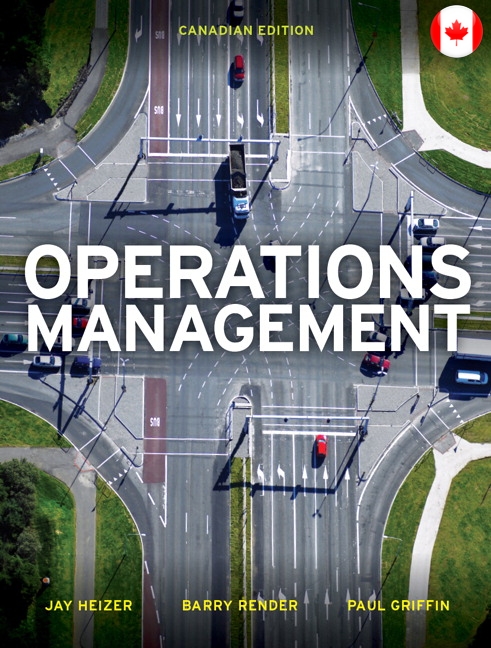
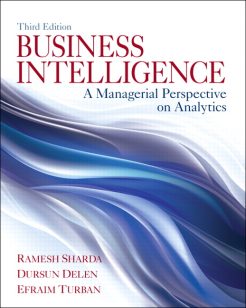
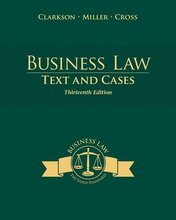
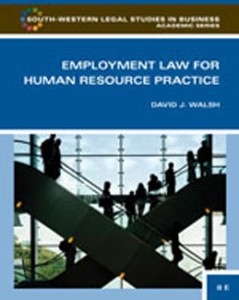
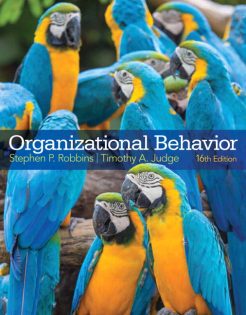

Reviews
There are no reviews yet.